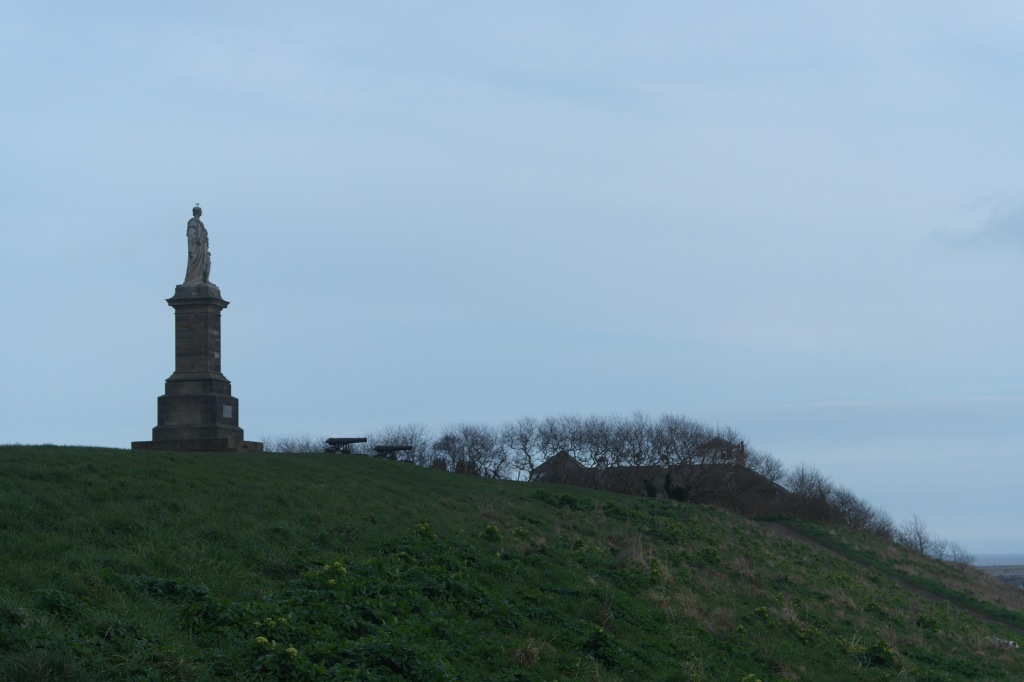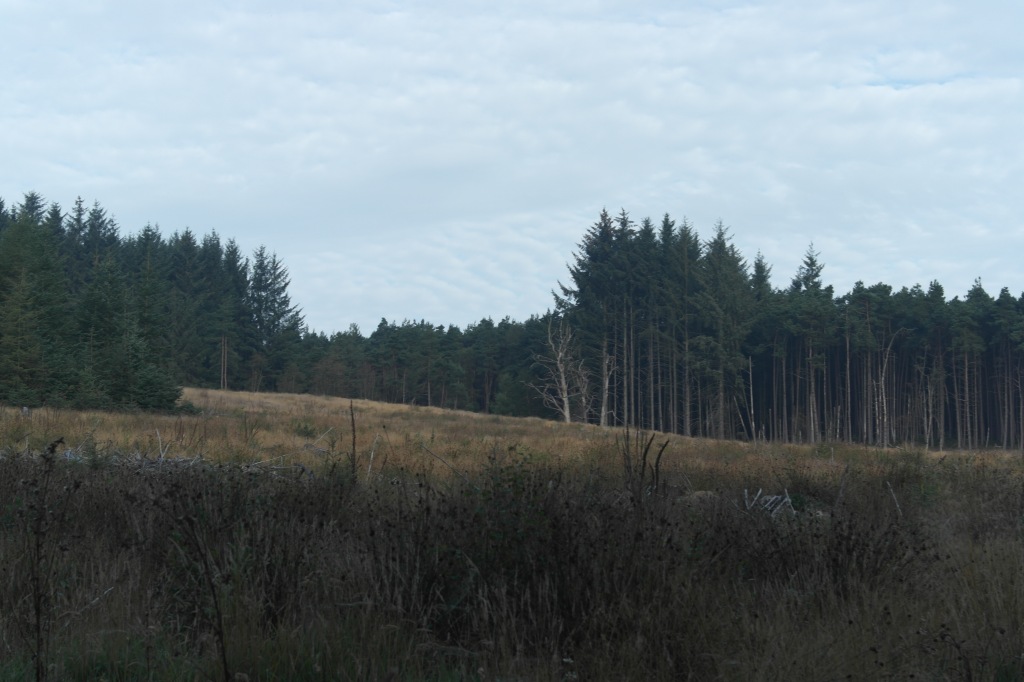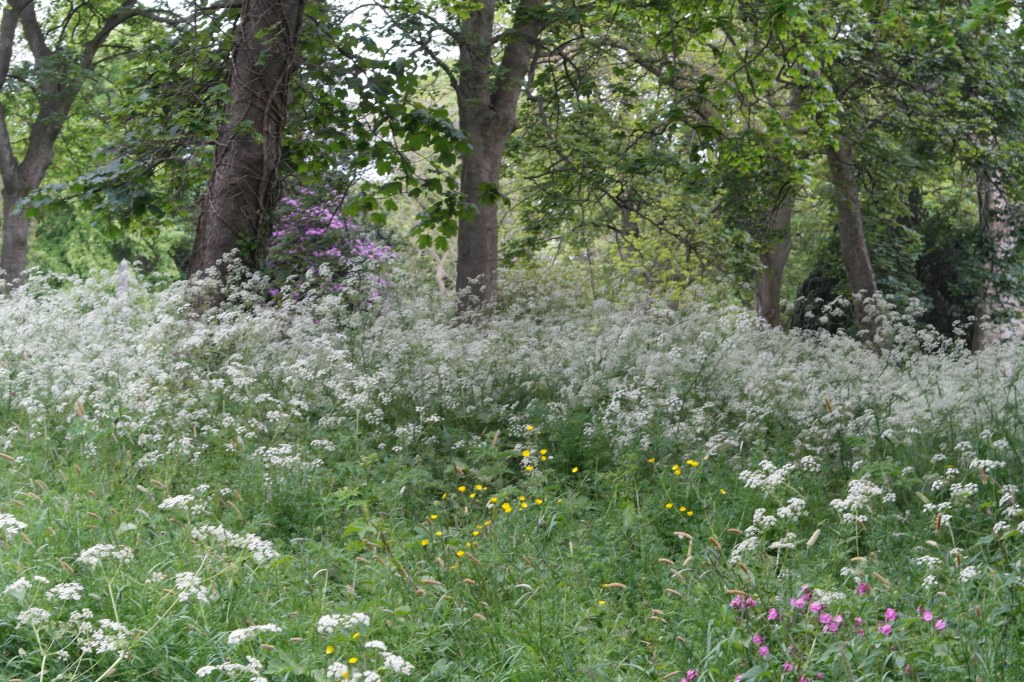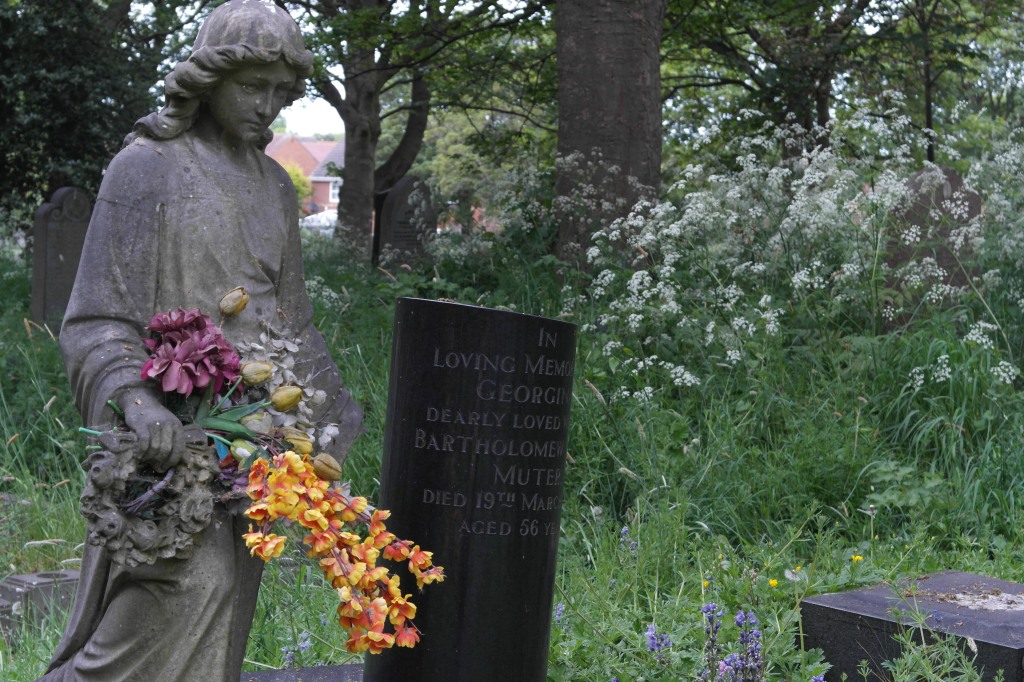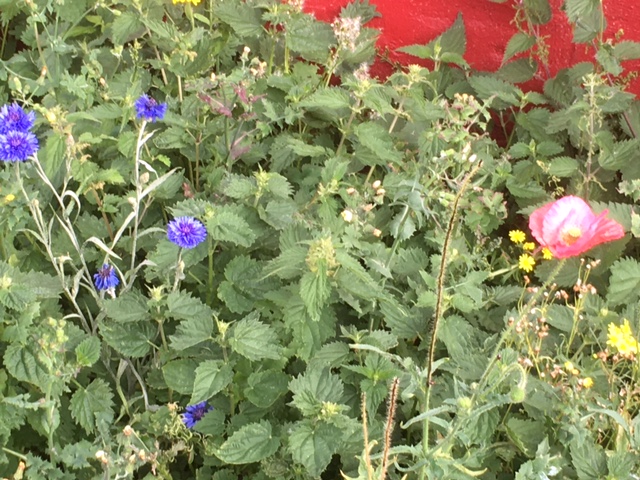
The road to the island is a string of red and white lights. We see them glowing from further down the coast, like the final scene in Field of Dreams: ‘if you build it, they will come’. It is 9.30pm and after sunset but the sky is still light. I had imagined a quiet quest to the lighthouse. On a small island, just off the coast, it is one of the darker places nearby. We have come in search of the Aurora Borealis. A solar storm is raging somewhere above us and we have been told that tonight the Aurora may be visible. Though we are in the north of England, it isn’t usual for them to be seen this far south. Stupidly, I hadn’t expected that so many others would have the same idea. We follow a slow trail of cars onto the island road. The car park nearest the lighthouse is already full, so we retreat to a smaller one further back down the road.

We walk up a lane bordered by wheat fields and wetlands. It is a rough, gravelled path with no lights. The sky is rich blue with an orange glow on the horizon. Smoky clouds hover motionless. A crescent moon, newly waxing, hangs beside a handful of stars. I hear the soft chitter of birds hidden somewhere in the hedgerow. A dark shape flits through the darkness, perhaps a bat. We can hear voices, laughing somewhere up the path. The lighthouse appears, floodlit in amber, through a gap in the trees. But it is still too light for the Aurora, so we return to the sea.

Far out, the sea is an impenetrable indigo. Closer to shore, patches of water suspended between black reefs shine with trails of coloured lights from the town. The town is a blur of illumination. Each wind turbine bears its own beacon. This morning when we passed here, the sea was like glass. Horizon bled into water so that the ships out there appeared to be floating. Tonight, those same ships bedazzle the dark sea with a plethora of lights. They have clustered together, as though for comfort in the night. On the beach, a small fire flickers orange. It is already a night of many colours.

We wait. I watch the moon sink lower. It is after eleven now. Neither of us has seen the Northern Lights before and we’re sceptical we will see them tonight. It is our first attempt and we can’t imagine we will be so lucky. A steady stream of cars comes and goes. They disgorge people: adults, teenagers, children in their pyjamas. All of us waiting.

Until what appears to be a skein of white cloud appears. My wife points it out, convinced it is something other. Then, rays of light, like sunlight through a cloud. There is suddenly a cerise tinge to the skein of cloud. Next, the rays become green and pink. The Aurora is right above us. It is like a starburst in the sky, sending down fingers of colour. Stars and clouds sit behind it. There is no apparent movement, yet it does keep changing, in colour and intensity. The lights move us, but mostly, there is joy. We watch until after midnight, when the colours become less vivid. We’re still smiling as we follow the slow snake of traffic away from the lighthouse. The Aurora vanish in the glare of the town lights, as if there is no storm above, but we still carry them inside us.










